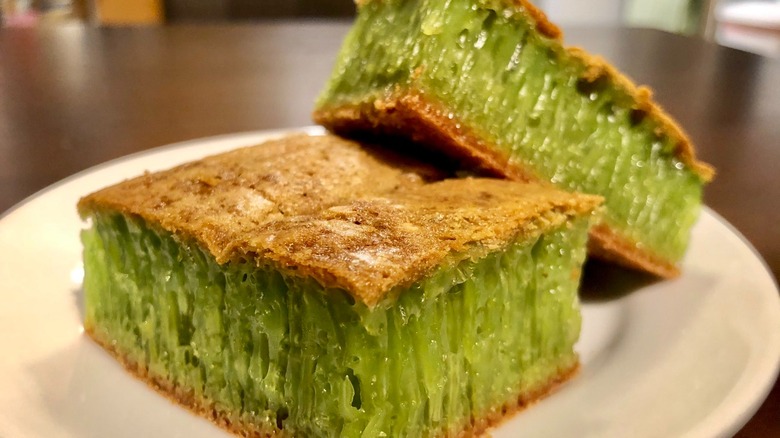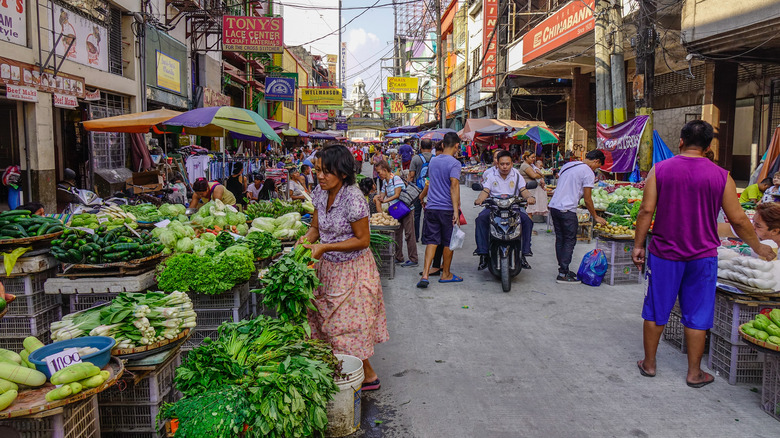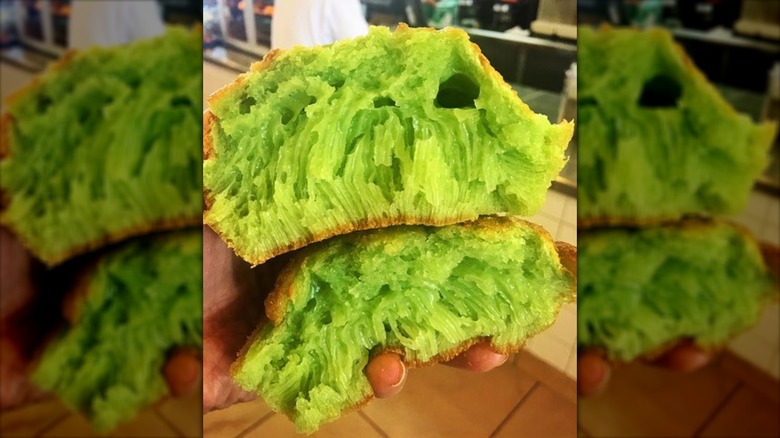Bánh Bò Nướng: The Beautiful Vietnamese Cake You Should Know
Southeast Asian cuisines are known globally for their unique sweet and salty flavors and satisfyingly spicy seasonings. But while you may be able to enjoy Thai food or Indian food in your local city, it is less likely you have a Vietnamese joint nearby.
Vietnamese food is relatively lighter and has more flavor infusions from citrus fruit than other nearby countries. As opposed to thick curries and stews, Vietnamese cuisine often showcases stir fries and light broth and rice noodles dishes. One of the most famous of these meals is Phở. Phở, according to Grocery.coop, is "slow-simmered, star anise infused broth, which resembles a French style of cooking, but is served by ladling it over thinly sliced meats, vegetables and piles or rice noodles so that the broth poaches the food." The addition of certain ingredients like bean sprouts and fish sauce to the dish keep Asian flavors front and center.
Just like many of the savory dishes, Vietnamese desserts are light and subtly flavored. Bánh bò nướng, a rich, flavorful sponge cake, is a popular dessert in Vietnam and known for its vibrant green hue and honeycomb structure.
History of bánh bò nướng
During China's rule of Vietnam from 111 BC to 980 AD (per Medium), the Chinese introduced White Sugar Cake to the colony (via The Food Wonder). The cake had a sugary yet sour taste, due to a fermentation process. But over the years, Vietnam transformed the cake completely from the original dense, white cake to something more sponge-like and did away with the white hue in lieu of something much more eye-popping.
According to Epicurious, the form of the cake we know today developed in the late 1800s or early 1900s. The cake is now sweeter, fluffier, and chewier than centuries ago and has taken on a stunning emerald green color from the infusion of pandan leaves. And, as the outlet shared, the reason for that added green color may have been the result of street vendors of that time wanting to attract buyers — mainly children passing by.
What bánh bò nướng is made of
Bánh bò nướng has a lengthy ingredient list, but each addition adds a unique feature to the cake. There are three aspects that combine to make this cake original: the honeycomb-shaped air pockets, chewy texture, and green coloring. According to The Food Wonder, the air pockets are created by yeast or baking powder. Secondly, while this is a sponge cake, it requires a chewy center to be ideal. Tapioca starch is added to give the perfect pull to the center. Lastly, coconut milk and pandan leaf extract gives the cake its classic green hue. These two ingredients also flavor the cake and add sweetness.
The rest of the ingredient list typically includes rice flour, coconut water, sugar, miso, vanilla extract, butter, eggs, and cream of tartar (via Epicurious), and this tasty treat can be enjoyed at home — if you're ambitious enough to make it — or at your local Asian market.


